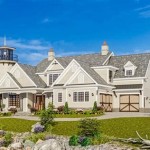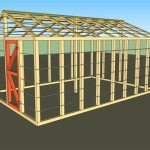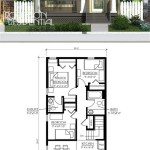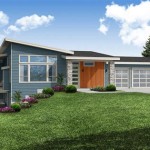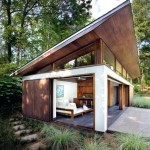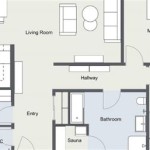A pool house floor plan is a detailed layout of the interior and exterior spaces of a pool house, a structure dedicated to supporting and enhancing the enjoyment of a swimming pool. It serves as an integral part of the outdoor living space, offering various amenities and functionalities, such as restrooms, changing rooms, storage areas, and lounge or entertaining sections.
When designing a pool house floor plan, factors like the size of the pool, the property’s dimensions, and the desired amenities must be considered. From cozy poolside retreats to elaborate entertainment hubs, the floor plan plays a crucial role in optimizing the space’s functionality and creating a cohesive design.
In the following sections, we will delve into the essential components of pool house floor plans, exploring different design strategies and considerations to help you create a customized space that seamlessly complements your outdoor living experience.
Here are 9 important points about pool house floor plans:
- Consider pool size and property dimensions
- Determine desired amenities and functionalities
- Plan for indoor-outdoor flow and transitions
- Incorporate storage for pool equipment and supplies
- Design comfortable and inviting seating areas
- Include restrooms and changing rooms
- Maximize natural light and ventilation
- Consider energy efficiency and sustainability
- Customize to suit personal style and preferences
By carefully considering these points, you can create a pool house floor plan that meets your specific needs and enhances your outdoor living experience.
Consider pool size and property dimensions
The size of your pool and property will play a major role in determining the size and layout of your pool house. You’ll need to ensure that the pool house is large enough to accommodate your desired amenities and activities, but not so large that it overwhelms the property.
Here are some things to consider when thinking about the size of your pool house:
- The size of your pool. A larger pool will require a larger pool house to accommodate storage for pool equipment and supplies, as well as space for swimmers to change and relax.
- The number of people who will be using the pool house. If you frequently entertain guests, you’ll need a pool house that is large enough to accommodate everyone comfortably.
- The amount of space you have on your property. The pool house should be in proportion to the size of your property. A large pool house on a small property can look out of place and cramped.
Once you have considered these factors, you can start to think about the layout of your pool house. The most important thing is to create a space that is functional and inviting. Consider the flow of traffic and make sure that there is enough space for people to move around comfortably.
Here are some tips for designing a functional pool house floor plan:
- Create a clear entryway. The entryway should be large enough to accommodate guests and provide a place to store shoes and other belongings.
- Place the restrooms and changing rooms near the pool. This will make it easy for swimmers to access these facilities without having to walk through the main living area.
- Create a comfortable seating area. The seating area should be large enough to accommodate your guests and provide a place to relax and enjoy the view of the pool.
- Include a kitchen or kitchenette. A kitchen or kitchenette will allow you to prepare and serve food and drinks to your guests.
- Provide storage for pool equipment and supplies. This will help to keep your pool area tidy and organized.
By following these tips, you can create a pool house floor plan that is both functional and inviting.
Determine desired amenities and functionalities
Once you have considered the size and layout of your pool house, you can start to think about the amenities and functionalities that you want to include. Here are some things to consider:
- Restrooms and changing rooms. These are essential amenities for any pool house. The restrooms should be large enough to accommodate multiple people, and the changing rooms should provide privacy for swimmers.
- Kitchen or kitchenette. A kitchen or kitchenette will allow you to prepare and serve food and drinks to your guests. If you plan on entertaining frequently, a full kitchen may be a good option. Otherwise, a kitchenette with a sink, refrigerator, and microwave may be sufficient.
- Seating area. The seating area is where you and your guests will relax and enjoy the view of the pool. Make sure that the seating area is large enough to accommodate everyone comfortably.
- Storage. You will need storage space for pool equipment and supplies, as well as for personal belongings. Consider including cabinets, shelves, and drawers in your pool house design.
In addition to these essential amenities, you may also want to consider including other features in your pool house, such as a fireplace, a wet bar, or a sound system. The possibilities are endless, so be creative and design a pool house that meets your specific needs and desires.
Plan for indoor-outdoor flow and transitions
One of the most important aspects of pool house design is planning for indoor-outdoor flow and transitions. You want to create a space that is both functional and inviting, and that allows you to easily move between the indoor and outdoor areas.
Here are some things to consider when planning for indoor-outdoor flow:
- The location of the pool house. The pool house should be located in a convenient location that is easy to access from both the pool and the main house. It should also be placed in a way that maximizes the views of the pool and the surrounding landscape.
- The size of the pool house. The pool house should be large enough to accommodate your desired amenities and activities, but not so large that it overwhelms the property. It should also be in proportion to the size of the pool and the main house.
- The layout of the pool house. The layout of the pool house should be designed to encourage indoor-outdoor flow. The main living area should be open and airy, with large windows and doors that lead to the pool deck. The kitchen and restrooms should be located in convenient locations that are easy to access from both the indoor and outdoor areas.
- The materials used in the pool house. The materials used in the pool house should be durable and weather-resistant. They should also be easy to clean and maintain. Consider using materials such as stone, tile, and concrete for the flooring, and wood or vinyl for the walls and ceiling.
By following these tips, you can create a pool house that is both functional and inviting, and that allows you to easily move between the indoor and outdoor areas.
Here are some additional tips for creating a seamless indoor-outdoor flow in your pool house:
- Use large windows and doors. Large windows and doors will allow you to maximize the views of the pool and the surrounding landscape. They will also make the pool house feel more open and airy.
- Create a covered patio or deck. A covered patio or deck will provide a shaded area where you can relax and enjoy the outdoors. It will also help to extend the usable space of your pool house.
- Use outdoor furniture. Outdoor furniture is designed to withstand the elements, so it is a good choice for pool houses. Choose furniture that is comfortable and stylish, and that complements the overall design of your pool house.
- Add some plants. Plants will add a touch of life and color to your pool house. They can also help to create a more inviting and relaxing atmosphere.
By following these tips, you can create a pool house that is both functional and inviting, and that allows you to easily enjoy the indoor and outdoor areas of your property.
Incorporate storage for pool equipment and supplies
Pool equipment and supplies can quickly clutter up your pool house if you don’t have adequate storage. By incorporating smart storage solutions into your pool house floor plan, you can keep your space organized and tidy.
Here are some tips for incorporating storage for pool equipment and supplies:
- Plan for both indoor and outdoor storage. You will need storage space for both pool equipment and supplies that you use regularly, as well as for items that you use less frequently. Indoor storage is ideal for items that you need to keep dry and protected from the elements, such as pool chemicals and filters. Outdoor storage is ideal for items that you use frequently, such as pool floats and toys.
- Choose storage solutions that are durable and weather-resistant. Pool equipment and supplies can be heavy and bulky, so it is important to choose storage solutions that are durable and weather-resistant. Consider using materials such as plastic, metal, or wood that is treated to withstand the elements.
- Maximize vertical space. Vertical space is often overlooked when it comes to storage. By using shelves, cabinets, and drawers, you can maximize the storage capacity of your pool house without taking up too much floor space.
- Use multi-purpose furniture. Multi-purpose furniture can be a great way to save space and add functionality to your pool house. For example, a bench with built-in storage can be used for seating and storage.
Paragraph after details
By following these tips, you can incorporate storage for pool equipment and supplies into your pool house floor plan in a way that is both functional and stylish.
Design comfortable and inviting seating areas
Comfortable and inviting seating areas are essential for any pool house. After all, you want to be able to relax and enjoy your time by the pool. When designing your seating areas, there are a few things to keep in mind:
- Choose comfortable furniture. The furniture in your seating areas should be comfortable and supportive. You want to be able to relax and enjoy your time by the pool, so don’t skimp on comfort. Consider choosing furniture with cushions and adjustable backs.
- Create a variety of seating arrangements. Not everyone wants to sit in the same type of chair. Some people prefer to sit in chairs, while others prefer to sit on benches or loungers. By creating a variety of seating arrangements, you can accommodate everyone’s needs.
- Provide shade. If you’re going to be spending any time in your seating areas during the day, you’ll want to provide some shade. This can be done with umbrellas, awnings, or trees.
- Add some personal touches. Your seating areas should reflect your personal style. Add some throw pillows, blankets, and artwork to make the space your own.
By following these tips, you can design comfortable and inviting seating areas that you and your guests will enjoy for years to come.
Include restrooms and changing rooms
Restrooms and changing rooms are essential amenities for any pool house. They provide a convenient and private space for swimmers to change their clothes and use the restroom. When planning your pool house floor plan, be sure to include adequate space for these important facilities.
- Location
The restrooms and changing rooms should be located in a convenient location that is easy to access from the pool. They should also be placed in a way that provides privacy for users.
- Size
The size of the restrooms and changing rooms will depend on the number of people who will be using the pool house. A good rule of thumb is to provide one toilet and one shower for every 10 people.
- Amenities
The restrooms and changing rooms should be equipped with all of the necessary amenities, including toilets, sinks, showers, and mirrors. You may also want to include amenities such as hair dryers, lockers, and benches.
- Privacy
The restrooms and changing rooms should be designed to provide privacy for users. This can be done by using frosted glass or opaque windows, and by providing individual stalls for toilets and showers.
By following these tips, you can design restrooms and changing rooms that are both functional and private. These essential amenities will help to make your pool house a more enjoyable and convenient space for everyone.
Maximize natural light and ventilation
Natural light and ventilation are essential for creating a comfortable and inviting pool house. By incorporating large windows and doors into your floor plan, you can maximize the amount of natural light that enters the space. This will help to reduce your energy consumption and create a brighter and more cheerful atmosphere.
In addition to natural light, ventilation is also important for keeping your pool house comfortable. By providing adequate ventilation, you can help to prevent the space from becoming too hot and humid. This is especially important in areas with high temperatures and humidity.
There are a number of ways to maximize natural light and ventilation in your pool house. Here are a few tips:
- Use large windows and doors. Large windows and doors will allow you to maximize the amount of natural light that enters the space. They will also help to create a more open and airy atmosphere.
- Place windows and doors strategically. When placing windows and doors, consider the direction of the sun. You want to place windows and doors in areas where they will receive the most sunlight. You also want to place windows and doors in areas where they will allow for cross-ventilation.
- Use skylights. Skylights are a great way to add natural light to a space. They can be placed in the ceiling or on the roof of your pool house.
- Install fans. Fans can help to circulate the air in your pool house and keep it cool and comfortable. You can install ceiling fans, wall fans, or portable fans.
By following these tips, you can maximize natural light and ventilation in your pool house and create a more comfortable and inviting space.
Consider energy efficiency and sustainability
As you design your pool house floor plan, it is important to consider energy efficiency and sustainability. By incorporating energy-efficient features into your design, you can reduce your energy consumption and save money on your utility bills. You can also help to reduce your environmental impact by using sustainable materials and practices.
Here are a few tips for considering energy efficiency and sustainability in your pool house floor plan:
- Use energy-efficient appliances and fixtures. When choosing appliances and fixtures for your pool house, look for models that are Energy Star certified. Energy Star certified appliances and fixtures meet strict energy efficiency standards set by the U.S. Environmental Protection Agency (EPA).
- Install a solar water heater. A solar water heater can help you to reduce your energy consumption and save money on your utility bills. Solar water heaters use the sun’s energy to heat water, so they do not require any electricity to operate.
- Use natural light and ventilation. As we discussed earlier, natural light and ventilation can help to reduce your energy consumption and create a more comfortable and inviting space. By incorporating large windows and doors into your floor plan, you can maximize the amount of natural light that enters the space. You can also use skylights to add natural light to a space.
- Use sustainable materials. When choosing materials for your pool house, consider using sustainable materials such as recycled materials, bamboo, and cork. Sustainable materials are produced in a way that minimizes environmental impact.
By following these tips, you can consider energy efficiency and sustainability in your pool house floor plan and create a more sustainable and environmentally friendly space.
Customize to suit personal style and preferences
Your pool house should reflect your personal style and preferences. After all, it is a space that you will be using to relax and enjoy your time by the pool. When customizing your pool house floor plan, there are a few things to keep in mind:
- Choose a style that you love. There are many different styles of pool houses to choose from, so take some time to browse through magazines and online galleries to find a style that you love. Once you have chosen a style, you can start to incorporate elements of that style into your floor plan.
- Consider your lifestyle. How do you plan to use your pool house? Will it be a place to entertain guests, relax with family, or both? Once you know how you plan to use your pool house, you can start to design a floor plan that meets your needs.
- Personalize your space. Don’t be afraid to add your own personal touches to your pool house. This could include anything from choosing a unique color scheme to adding personal artwork to the walls. Your pool house should be a reflection of your own personality and style.
- Work with an architect or designer. If you are not sure how to design a pool house floor plan that meets your needs, consider working with an architect or designer. A professional can help you to create a floor plan that is both functional and stylish.
By following these tips, you can customize your pool house floor plan to suit your personal style and preferences. Your pool house should be a space that you love to spend time in, so make sure to design it in a way that reflects your own unique personality and style.


:max_bytes(150000):strip_icc()/SL-2061_F1-7d39bf6a48334acc99ca7f8f92736e02.jpg)







Related Posts

